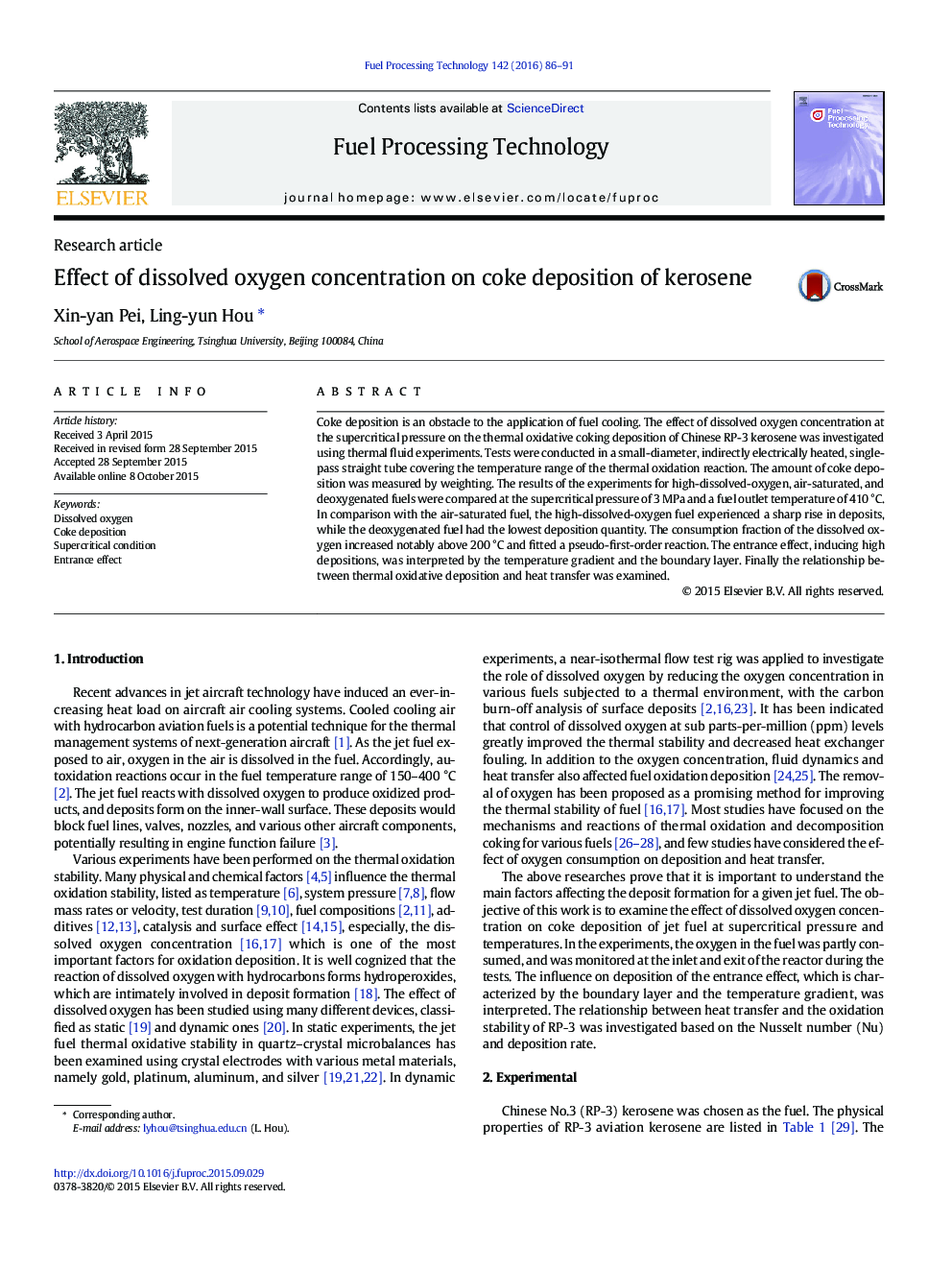| Article ID | Journal | Published Year | Pages | File Type |
|---|---|---|---|---|
| 6656693 | Fuel Processing Technology | 2016 | 6 Pages |
Abstract
Coke deposition is an obstacle to the application of fuel cooling. The effect of dissolved oxygen concentration at the supercritical pressure on the thermal oxidative coking deposition of Chinese RP-3 kerosene was investigated using thermal fluid experiments. Tests were conducted in a small-diameter, indirectly electrically heated, single-pass straight tube covering the temperature range of the thermal oxidation reaction. The amount of coke deposition was measured by weighting. The results of the experiments for high-dissolved-oxygen, air-saturated, and deoxygenated fuels were compared at the supercritical pressure of 3 MPa and a fuel outlet temperature of 410 °C. In comparison with the air-saturated fuel, the high-dissolved-oxygen fuel experienced a sharp rise in deposits, while the deoxygenated fuel had the lowest deposition quantity. The consumption fraction of the dissolved oxygen increased notably above 200 °C and fitted a pseudo-first-order reaction. The entrance effect, inducing high depositions, was interpreted by the temperature gradient and the boundary layer. Finally the relationship between thermal oxidative deposition and heat transfer was examined.
Related Topics
Physical Sciences and Engineering
Chemical Engineering
Chemical Engineering (General)
Authors
Xin-yan Pei, Ling-yun Hou,
